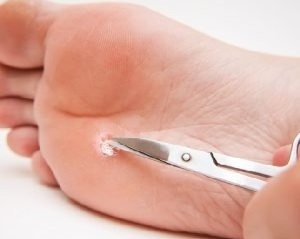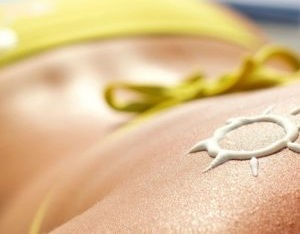Warts are not only an unpleasant skin defect, but also a complex disease that requires complex treatment. The main cause of the proliferation of papillomas is a dormant virus in the human body. Laser wart removal is a safe modern method. It is used all over the world: fast healing and minimal risk of recurrence allow you to get rid of warts in children and adults in vain.
Modern method of wart removal
Reduced immunity is a prerequisite for the appearance of warts. The growths grow rapidly and can form entire clusters. You can become infected with the papilloma virus - the main cause of the disease - through contact with a patient or his or her personal belongings. Whatever the cause of the warts, they need to be addressed. The first step in a comprehensive treatment is to remove all the growths on the skin.
Modern methods of wart removal include radio wave and laser removal. Laser removal of neoplasms on the skin is the simplest and most painless procedure that ensures a stable result. The mini surgery is performed using local anesthesia and without additional lengthy training. Delicate removal of the accumulation is carried out in a special office and only by an experienced doctor. The stages of the procedure and the qualification of the doctor guarantee that there will be no recurrences of the disease in the near future.
What kind of warts are removed by laser?
Papilloma can vary in appearance and location on the human body. Warts affect the arms, legs, back and face of both adults and children. There are no age restrictions for people with papillomatosis. With the help of laser therapy it is possible to remove plantar warts. These are neoplasms of the feet that develop in the corneal part of the skin. Layered skin turns into a ring with a clear core in the center.
Laser is used to remove ordinary warts: growth of dense, rounded structure. Such warts differ in skin color (they are much darker). Over time, ordinary warts increase in size and irritate a person: they cause severe discomfort and sometimes bother.
Laser therapy is used to remove flat warts. The size of small formations is not more than 1 cm. The growths have a flat structure and look like skin-colored nodules on the side. Flat warts do not rise much above the skin and rarely cause discomfort to a person. Before prescribing the laser technique of accumulation removal, an accurate diagnosis is made - examining the wart and its type.
Advantages of the procedure

It is necessary to determine the status of the neoplasm during the initial examination. If it is not a tumor, it can be removed using modern methods. If we talk about warts on the feet, their removal is carried out in several stages - such formations often have rods that grow into soft tissues. Warts on the feet are constantly painful and cause discomfort while walking. Only with the help of laser method, the removal of such warts is done in one step and it allows you to quickly recover from the procedure.
Root canal removal is difficult without further recurrence: simple surgical excision is ineffective. Laser therapy helps to destroy all the cells infected with the virus, even those that are not visible to the naked eye.
Advantages of laser therapy include: speed of procedure and speed of recovery. In general, removal of the growth takes no more than half an hour, depending on the complexity of the neoplasm and the number of warts. The minimal number of contraindications makes laser therapy universal and safe for children. The procedure is allowed from the age of 5.
The painless procedure is suitable for people with hypersensitivity: small amounts of medications and painkillers are used to remove the wart.
After laser therapy, there are virtually no scars or solid scars left on the affected skin area. Fast recovery and low probability of complications are the main advantages of the procedure compared to other modern techniques. Innovative equipment allows mini-surgery to be performed without perceived discomfort for the patient. Rehabilitation of the patient is carried out at home in his usual conditions.
Contraindications to this procedure
effective technique has many contraindications. In preparation for the mini surgery, the patient undergoes a full examination of the body. Based on the results obtained, the attending physician evaluates the patient for further treatment and risks.
Contraindications to laser therapy:
- skin rash and herpes;
- advanced dermatitis;
- high blood pressure;
- Acute respiratory diseases (after previous illnesses the patient has a weakened immune system);
- malignant diseases.

Pregnant women should refrain from the procedure: If possible laser therapy should be postponed until after delivery. If a rash of unknown origin appears on the human body, it is necessary to delay the removal of warts. Systemic diseases are a direct contraindication to mini-surgery.
Thyroid diseases preclude the use of a laser beam to remove an unpleasant wart. Sun allergy is a rare disease that does not require a laser procedure: in such cases, the fight against warts is carried out using radiotherapy.
Acute renal and hepatic insufficiency is contraindicated for mini-surgery. Before using modern equipment it is necessary to take into account all the contraindications, which can lead to serious complications in adults and children.
How the procedure is performed
The procedure is performed under sterile conditions. Earlier the patient undergoes blood and urine tests. Based on the results obtained, the type of anesthesia used and the analgesics you will need during laser therapy are determined. The non-invasive method eliminates skin contact: a person is sitting on a comfortable sofa lying down or sitting. A drug is injected into the wart pages to reduce any pain.
After 5-10 minutes, the injection is effective. The laser beam affects the accumulation in a matter of minutes. After the procedure, the affected skin area is treated with special means and a bandage is applied.
Half-hour surgery does not require hospitalization of the patient: he goes home immediately after laser therapy.
Skin treatments and repetitive dressings are performed at home. During the procedure, the possibility of bleeding is completely ruled out. If there is no patch on the skin, infections or pathogenic microorganisms have not been able to penetrate the wound - secondary postoperative infection is ruled out.
Rehabilitation after laser removal
Healing of the skin area affected by the wart depends directly on the procedure performed. The high-tech laser is completely sterile (bactericidal). It acts on the skin and does not cause inflammation - for this reason, no scars or visible scars remain on the body. The pathogen of bacteria or viruses is completely destroyed at the laser-treated site. Immediately after the procedure you may feel a slight discomfort under the bandage which will soon disappear.
The skin recovers completely within 2 weeks (up to one month in people with weakened immunity). A hard crust forms on the treated area: healing takes place under it. After the lower skin has healed, the crust falls off without further damage.
The bark lasts about 10 days and does not cause any discomfort in humans. New skin appears in the third week after the procedure.
Home Care
Home care includes periodic skin treatments. The patient treats the cortex and the skin around it with disinfectants. The crust should never be torn or soaked - it protects new skin.
Accidental injury may result in fungal infection or infection. Such a result does not allow the wound to heal and soon new warts appear.
Do not tan until new skin appears: the crust should not be exposed to ultraviolet rays. You should not visit the sauna or solarium during the rehabilitation period. Visiting pools or open water bodies is excluded. It is not allowed to treat the skin with cosmetics after laser therapy.
Alcohol-containing products that dry out the bark are dangerous to the skin. Patient behavior after laser excision of accumulation determines the rate of its recovery.














































































